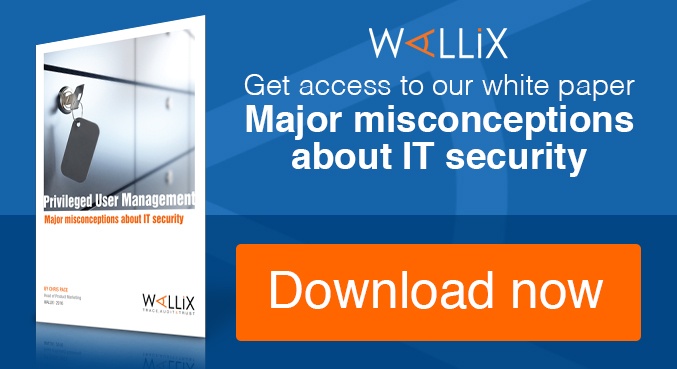You can’t spend your way into a strong security posture. Being secure involves integrating tools, policies, people, and budgets. Getting secure will absolutely require some expenditure of cash. How much is the right amount? The answer depends on each organization’s unique security needs. In general, though, the best practice is to assess the potential financial impact of an incident (data breach cost) and weigh it against the cost of staying secure through breach prevention. Figuring this out can be a bit challenging, but it can be done.
WALLIX
Recent Posts
Cost of a Data Breach vs. Cost of a Security Solution
[fa icon="calendar'] Sep 19, 2018 10:19:46 AM / by WALLIX posted in Mitigating External Attacks, Optimizing Cyber-Insurance
How PAM Enables IEC 62443 Implementation
[fa icon="calendar'] Sep 11, 2018 9:03:00 AM / by WALLIX
The IEC 62443 standard is a sprawling, highly complex collection of cybersecurity standards addressing the unique needs of Industrial Automation and Control Systems (IACSs). It covers the full spectrum of security, from risk analysis through the definition and implementation of security policies for IACSs. As with most security standards, the issues of user access control and identity management are critical to success. In particular, an organization seeking to be certified for complying with the IEC 62443 standard should address the matter of Privileged Access Management (PAM). PAM relates to administrative, or privileged, users who can set up or modify the IACS elements that are being secured through the standard.
Uniting Identity Access Management (IAM) and PAM for Cohesive Identity Governance
[fa icon="calendar'] Sep 5, 2018 11:22:37 AM / by WALLIX posted in Preventing Insider Threat, Improving Cybersecurity
This month marks the 25th anniversary of the famous “On the Internet, no one knows you’re a dog” cartoon appearing in The New Yorker. Oh, how true that was, and still is, a quarter century later. Chances are, artist Peter Steiner had no idea how prescient his drawing was. We are indeed in the Internet dog days, of identity access management (IAM) and PAM at least.
The Critical Elements of a Scalable PAM Solution
[fa icon="calendar'] Aug 28, 2018 9:00:00 AM / by WALLIX posted in Controlling Third Party Access, Improving Cybersecurity
An organization’s security posture benefits from the ability to manage and track access to privileged accounts. Privileged users—as well as those impersonating them—can present major security threats. A Privileged Access Management (PAM) solution offers an answer. It enables security teams to stay on top of privileged account access. To work, however, it must be a scalable PAM solution. The PAM solution must scale flexibly in a growing organization or suffer being disused, to the detriment of security overall. What does it take to build a scalable PAM solution? This article explores the answer to that question.
What is Insider Threat?
[fa icon="calendar'] Aug 22, 2018 10:43:12 AM / by WALLIX posted in Preventing Insider Threat
In the cybersecurity industry, we often talk about the ‘Insider Threat’ that organizations face in security their most critical data and assets. From manufacturing to healthcare, every business encounters the challenge of both preventing and detecting these risks. But what exactly is Insider Threat? What does it mean for business?








